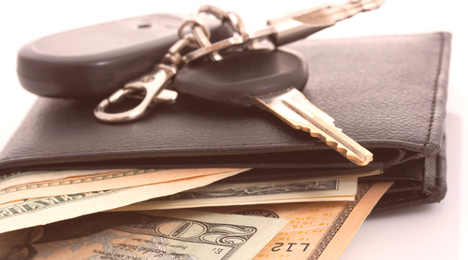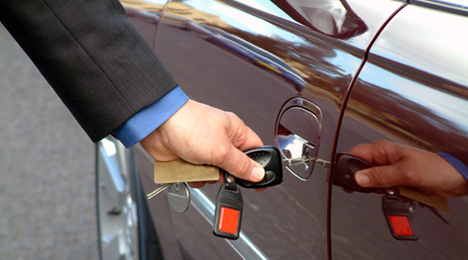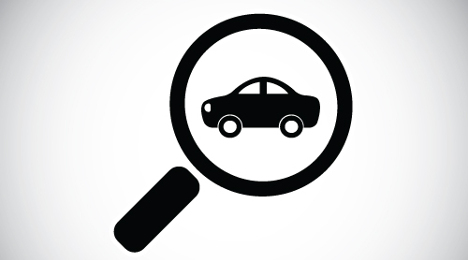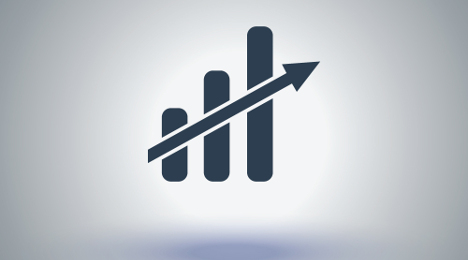A day after the latest auto loan default data showed only marginal movement, TransUnion reported on Wednesday that its information shows the national auto loan delinquency rate declined to its lowest level in two years.
TransUnion’s auto delinquency rate — the ratio of borrowers 60 days or more delinquent on their vehicle installment contracts — dropped to 0.95 percent in the second quarter, down 3.1 percent from 0.98 percent a year earlier.
Analayts mentioned that auto delinquency rates now are at the lowest level since Q2 2013, when delinquency rates dropped to 0.86 percent.
While the overall reading is showing a positive trend, TransUnion carved out an analysis in the subprime space, too, and found similar delinquency behavior unfolding.
Delinquency rates for subprime borrowers — those consumers with a VantageScore 3.0 credit score lower than 601 — continued their steady decline, settling at 4.98 percent in Q2. The reading marked a 1.6-percent year-over-year decline from 5.09 percent in Q2 of last year.
On a quarterly basis, delinquency rates for subprime consumers declined 4 percent from 5.19 percent in Q1 of this year.
TransUnion found that nearly 72.5 million consumers have an auto loan or lease as of Q2 with nearly one-fifth (18 percent) of those consumers in the subprime risk tier.
Despite the 13.1 million subprime consumers with auto loans, subprime participation remains below the 23.7 percent level observed in Q3 2009 coming out of the Great Recession.
“Lenders are being prudent about re-entering the subprime lending market, and consumers are effectively managing their loans as delinquency rates remain stable,” said Jason Laky, senior vice president and automotive business leader for TransUnion.
“In today’s lending environment, we’re seeing consumers across all risk tiers take advantage of low rates. Super prime consumers, typically a group with greater wherewithal to purchase their cars for cash, are also financing their cars with more frequency,” Laky said.
Of the 72.5 million consumers with an auto loan or lease, TransUnion determined 16.8 million belong to the super prime risk tier — those consumers with a VantageScore 3.0 credit score 780 or higher. More than 23.3 percent of all auto loans are held by super prime consumers, an 8.2-percent year-over-year increase from Q2 of last year.
Viewed one quarter in arrears (to ensure the large majority of accounts are reported and included in the data), TransUnion discovered new auto loan originations increased 4.3 percent year-over-year to 6.5 million in Q1, up from 6.2 million in Q1 of 2014.
On a quarterly basis, auto originations increased 5.3 percent from 6.1 million in Q4 of 2014.
Analysts noticed auto loan debt per borrower grew 3.4 percent to $17,696 in Q2 2015. They pointed out the growth moderated across all risk tiers on a year-over-year basis, with the slowest pace of growth since Q2 2012.
“While growth rates have slowed progressively throughout the past two years, we are still in a high growth period,” Laky said. “Demand for auto loans was pent up during the Recession, and we’re seeing a return to a normal momentum.”
The youngest consumer group — individuals age 30 and younger — experienced growth in average balance for open auto trades in Q2. Up from $14,778 in Q2 of 2014, TransUnion indicated the average balance was $15,200 in Q2 of this year, an increase of $423.
Analysts went on to mention nearly 831,000 more young consumers had an auto loan in Q2 of this year than in Q2 of last year. Despite this increase, TransUnion pointed out delinquency rates remained stable from Q2 2014 (1.27 percent) to Q2 2015 (1.28 percent).
Looking at the data geographically, TransUnion noticed only two of the nation’s largest cities experienced an increase in auto loan delinquency in Q2. Houston (up 5.4 percent from 1.11 percent in Q2 2014 to 1.17 percent in Q2 2015) and Washington D.C. (up 5.1 percent from 0.79 percent in Q2 2014 to 0.83 percent in Q2 2015) experienced rises, while Boston remained unchanged at 0.59 percent for both Q2 2014 and Q2 2015.
On a state level, TransUnion reported delinquency rates in 33 states declined in Q2. Oklahoma (down 17.2 percent from 1.66 percent in Q2 2014 to 1.37 percent in Q2 2015) and Illinois (down 11.9 percent from 1.01 percent in Q2 2014 to 0.89 percent in Q2 2015) experienced double-digit declines in their year-over-year delinquency.
Analyts added that all states had an increase in auto loan debt per borrower in Q2, with New Mexico (up 5.9 percent from $20,387 in Q2 2014 to $21,586 in Q2 2015) and Georgia (up 5.2 percent from $18,312 in Q2 2014 to $19,258 in Q2 2015) experiencing the largest rises.
“The auto loan market continues to be fueled by new account growth, higher balances financed and low delinquency rates,” Laky said. “We’re observing low delinquency rates in major U.S. cities and many states, indicating a positive lending environment.”
This information is reported by TransUnion and is part of its ongoing series of quarterly analyses of credit-active U.S. consumers and how they are managing credit related to mortgages, credit cards and auto loans.
Contrary to what happens most times when the S&P/Experian Consumer Credit Default Indices are updated, the auto loan component made a move upward on a sequential basis while the other four elements watched by S&P Dow Jones Indices and Experian either stayed flat or declined.
However, analysts called the auto loan default uptick “scant” since it moved just 1 basis point higher in July from the previous month when the all-time low was established. The latest reading of 0.86 percent still is 10 basis points lower than a year earlier as the level has remained below 1 percent for four consecutive months.
Meanwhile, the composite portion of the S&P/Experian Consumer Credit Default Indices — a comprehensive measure of changes in consumer credit defaults — posted a reading of 0.92 percent in July, which is 1 basis point lower from the previous month.
Analysts noted the first mortgage default rate was unchanged from the prior month with a rate of 0.80 percent. The second mortgage default rate also stayed flat in July versus the previous month, checking in with a default rate of 0.55 percent.
Registering the most movement of any component, the bank card default rate fell 9 basis points, to come in at 2.79 percent in July.
“Defaults rates across different loan types continue to follow the same pattern: bank card defaults are about 2 percentage points higher than auto loans or mortgages. This pattern has been in place through the history of the indices and is unlikely to shift anytime soon,” said David Blitzer, managing director and chairman of the index committee at S&P Dow Jones Indices.
“Even the increase in the default rate for automobile loans was a scant 1 basis point,” Blitzer continued.
Looking at the geographic data analyst review regularly, they mentioned four of the five major cities saw their default rates increase in the month of July.
Chicago saw the biggest increase, reporting in at 1.15 percent, up 11 basis points from the previous month.
Miami reported a default rate of 1.45 percent, up 3 basis points from June.
Los Angeles and New York both recorded default rate increases of 1 basis point above the previous month at 0.89 percent and 0.92 percent, respectively.
Dallas was the only city in July to record a lower default rate compared to the prior month, checking in at 0.64 percent, which was 4 basis points on a sequential basis.
“Chicago did see a small bump up in defaults, bringing rates to levels seen at the start of the year,” Blitzer said. “However, given overall patterns, this is not a major worry.
“All five of the cities covered in the release have put the financial crisis behind them and are all at pre-crisis lows,” he continued. “The lack of any regional differences is another sign of improving individual financial conditions and a stable economy.”
Blitzer then offered his assessment of how the economy is behaving as a whole and the resulting impact on defaults.
“The stable consumer credit default rates confirm the recent economic improvements seen in the unemployment rate and GDP growth,” he said. “Recent increases in outstanding consumer credit combined with stable default rates and strong consumer sentiment point to stable individual financial conditions.
“However, wage increases are running at about 2 percent annually — or under 1 percent after inflation — which means that there is little margin for error should the economy stumble,” Blitzer went on to say.
“At the same time, concerns over the impact of an expected Federal Reserve rate increase are exaggerated. Interest rates on consumer loans are unlikely to be affected and no immediate economic fallout is anticipated,” he added.
Jointly developed by S&P Indices and Experian, analysts reiterated the S&P/Experian Consumer Credit Default Indices are published monthly with the intent to accurately track the default experience of consumer balances in four key loan categories: auto, bankcard, first mortgage lien and second mortgage lien.
The indices are calculated based on data extracted from Experian’s consumer credit database. This database is populated with individual consumer loan and payment data submitted by lenders to Experian every month.
Experian’s base of data contributors includes leading banks and mortgage companies and covers approximately $11 trillion in outstanding loans sourced from 11,500 lenders.
Generally speaking, auto loan payments are being made on time these days, as Experian Automotive shows in its latest State of the Automotive Finance Market report.
But how are the different regions of the country faring?
First, let’s look at the overall statistics.
For the second quarter, the 30-day delinquency rate for the period was 2.32 percent, which was the best Q2 reading in five years, Experian said. A year ago, it was at 2.37 percent.
The 60-day level nudged up slightly, reaching 0.607 percent after coming in at 0.603 percent a year ago.
For details on how delinquency is trending in your neck of the woods, Experian offers these charts, which break down where 30-day and 60-day delinquency rates are highest and lowest.
30-Day Delinquencies
Highest
Mississippi, 3.77%
Washington, D.C., 3.49%
Louisiana, 3.16%
South Carolina, 2.91%
West Virginia, 2.80%
Lowest
Oregon, 1.03%
North Dakota, 1.11%
Minnesota, 1.18%
Washington, 1.21%
Idaho, 1.22%
60-Day Delinquencies
Highest
Washington, D.C., 1.02%
Mississippi, 0.94%
Louisiana, 0.87%
South Carolina, 0.74%
Alabama, 0.71%
Lowest
Oregon, 0.25%
North Dakota, 0.25%
Vermont, 0.27%
Washington, 0.27%
Iowa, 0.27%
Idaho, 0.27%
The fastest growing auto loan balances in nearly a decade and record loan dollar volumes? Check.
The lowest second-quarter 30-day delinquency rate in five years? Check.
Strong auto sales? Check.
Oh, and there’s balanced portfolio distribution amongst the credit tiers.
“The automotive loan market is working the way it’s supposed to, with loans being made, vehicles purchased and payments made on time,” said Melinda Zabritski, Experian’s senior director of automotive finance.
“The automotive loan market is gaining momentum while maintaining remarkable stability,” Zabritski added. “It’s a good sign for the economy overall.”
Experian Automotive lays out those signs in its latest State of the Automotive Finance Market report released Wednesday.
At the top of Experian’s list: the second-quarter’s $92 million year-over-year growth in total dollar volume for outstanding car loan balances This represented the steepest climb in dollar volume since 2006, the company said.
Total loan balances were at $932 billion Q2, an all-time high, Experian said. A year ago, they were at $840 billion.
Meanwhile, the National Consumer Credit Trends Report from Equifax released Monday said the total outstanding balance on car loans and leases combined as of June was at $1.021 trillion, which beats the year-ago sum by 10.5 percent. It says there are 73.7 million outstanding accounts, which is up 8 percent.
“Strong sales numbers in both the new-car and used-car markets, coupled with the availability of quality financing for consumers are a few of the main reasons the industry has reached the one trillion dollar mark," said Dennis Carlson, deputy chief economist at Equifax. “It clearly reflects that the improving economy has provided the impetus for consumers to replace their aging vehicles and begin to satisfy their pent-up auto demand.
Payments made on time
Looking at Experian's data, here’s another thing that make the current environment all the more impressive: the market has great stability these days when it comes to borrowers making payments.
In fact, the 30-day delinquency rate for the period was 2.32 percent, which was the best Q2 reading in five years, Experian said. A year ago, it was at 2.37 percent.
The 60-day level nudged up slightly, reaching 0.607 percent after coming in at 0.603 percent a year ago.
Not to mention, there appears to be a great deal of balance when it comes to the credit-tier distribution, Experian found.
Granted, the combined Q2 market share for subprime and deep-subprime loans climbed from 19.92 percent to 20.02 percent in the past year, but super prime’s share was up as well, growing from 20.68 percent to 20.99 percent.
“Overall, lenders are taking a balanced approach to their portfolios, with slight growth in subprime and deep subprime balanced by the uptick in loans to the super-prime risk tier,” Zabritski continued. “There really is nothing alarming about the growth seen in subprime loans, provided consumers continue to make timely payments.”
More on auto loan growth
Going back to Equifax’s data, the company said banks were seeing 10.1 percent growth in auto loan balances through June, with finance companies seeing similar patterns at 10.2-percent growth.
However, when it comes to the leasing segment, finance companies are way ahead; in fact, their leasing portfolios are seven times as big as those from the banks, Equifax found.
What’s more, the company notes that, “Finance companies are also growing originations faster than banks with 54.2 percent of all new auto accounts and 51.8 percent of dollar originations through April 2015 coming through finance companies.”
Offering additional context, Carlson noted: “The captive auto finance companies are supporting sales for the manufacturers, and dealers continue to work with independent auto finance companies to find the right loans for their customers, particularly in the non-prime space.
“This combination has led to finance companies growing slightly faster than the commercial bank segment.”
While continuing to keep close tabs on how 60-day delinquencies are trending, Equifax is also watching write-offs, too, since they made a small move upward as of June.
According to data shared with SubPrime Auto Finance News this week, Equifax reported that write-offs increased slightly year-over-year, ticking up 4.0 percent in June to 19.0 basis points of balances outstanding. However, the latest reading extended a gradual descent each month since the recent high point of 22.2 basis points of outstanding balances registered last December. Those movements show the seasonality of this metric, Equifax deputy chief economist Dennis Carlson said.
“(Write-offs) have been increasing slightly. At this point, though, I’m not too concerned by it,” Carlson said. “I think it’s a trend that absolutely bears watching. We’re certainly nowhere near the levels we have been, especially on the auto finance side.
“I would be agree with the statement that to some degree it may be normalization,” he added.
That auto finance side Carlson mentioned is how Equifax breaks down its data, separating commercial banks from other companies that offer auto financing. Write-offs for just banks came in at 8.6 basis points of balances outstanding in June, 4.5 percent lower than a year earlier. But among finance companies — which include institutions holding much of the subprime paper being booked nowadays — write-offs stood at 31.3 basis points of outstanding balances, a mark 8.4 percent above the year-ago reading.
Before managers become too alarmed by the rise, Carlson offered some perspective.
“A better way to look at it, which is something we’ve done in the past, is to look a vintage level,” he said. “Is that rate increasing at the six-month mark? It could be very be the result of loans that weren’t made recently.
“We’re may be seeing a slight uptick because of loans perhaps made two years ago,” Carlson continued. “It’s something that bears watching. Obviously if it continues to climb, it would be something that would be very concerning. As it is today, it’s just a slight increase.”
Equifax also is watching what it calls serious delinquencies, contracts 60 days or more past due and perhaps destined for the repossession and recovery departments.
In June, overall 60-day delinquencies stood at 0.91 percent of the industry’s total portfolio, down 6 basis points from a year ago. For banks, the rate stayed nearly flat year-over-year at 0.36 percent. Meanwhile for finance companies, the reading actually dropped 7 percent from the year-ago level to settle at 1.59 percent.
Those serious delinquencies are “something that I’m looking at very carefully because to me it’s an early warning sign that something is happening,” Carlson said while adding that this is another metric where it’s more useful to compare year-over-year rather than sequentially.
“I like comparing that rate from a year-over-year perspective. I rarely look at month to month because there’s just a tremendous amount of seasonality. There’s a very seasonal pattern in terms of delinquency,” he continued. “When you look at year-over-year, I think it gives you a very good glimpse of where we are today.”
Spireon chief marketing officer Shawn Hansen gave dealers and subprime finance companies what he called the “bottom line” about the potential benefits of the company acquiring Inilex.
For operations that demand a GPS device be attached to a vehicle in order for the financing and installment contract to be finalized, Hansen highlighted that Spireon clients now can pivot the conversion to show that it’s not just about underwriting criteria. The device can open the door to a wide array of consumer applications, and more importantly for dealers and finance companies, the chance to generate more revenue.
“There is a whole range of consumer applications that can be layered once the GPS tracker is in place,” Hansen said during a conference call after Spireon announced the acquisition of Inilex earlier this week.
Hansen continued that during the past 20 years, “the IT industry in general has been totally turned on its head because of what’s happened with consumer applications.
“Because of consumer demand, companies have changed their IT policies in the way they give productivity apps to their users. We see that same thing happening with car dealerships in buy-here, pay-here and subprime,” he continued. “We see that users will benefit from additional applications they can use on their phones or get direct access to. This is a very complementary fit that give the dealer an opportunity to show where the value is to their customers.”
Through this acquisition, Spireon now has 2.3 million connected vehicles in its network.
“An auto finance company or dealership who already uses GPS technology and can offer the customer the chance to track their vehicle can now make more money. That’s the bottom line,” Hansen said.
“They can make more money by offering theft recovery services and additional consumer applications to the end user,” he continued. “It presents a way to increase their profits and to add another value proposition on top of the fact that their vehicle is being tracked and they’re getting a loan that they might not be able to get otherwise.”
While they might have been seen as industry competitors, Hansen indicated Spireon and Inilex have had “a long-standing relationship.” That situation led in part to the deal.
“Inilex has been a customer of Spireon in providing some of the underlying technology for them. It was a natural fit for the two companies to come together,” Hansen said.
“We’ve been discussing this for some time. I’m not in a position to say how long it was going on, but the business relationship has been in place for some time,” he continued.
Hansen noted Spireon did not face any antitrust or regulatory hurdles to complete the acquisition.
“This is a relatively straightforward integration of the two companies,” he said.
Hansen also mentioned a message to any dealers or finance companies that were solely Inilex customers prior to this week’s developments.
“Integration is happening right now. Sales and marketing channels are already integrating,” Hansen said. “As far as the technology is concerned, we’re kicking off those efforts. We’re going to out to all of our different dealer channels to let them know this work is being done and will be completely relatively shortly.”
Two of the largest players in the GPS technology space now are under the same corporate umbrella.
Spireon, a portfolio company of Bertram Capital, on Wednesday announced the acquisition of privately held Inilex, another provider of GPS recovery software solutions. Inilex’s main product, Skylink, can enable dealers to significantly increase their financial and insurance revenue with high-value GPS-based add-on services.
As the automotive industry transforms in the connected car era, officials highlighted this acquisition enables Spireon to uniquely connect all major segments of the vehicle life cycle, ranging from franchised dealers to independent and buy-here, pay-here dealerships, fleets, finance companies, insurance companies and rental car fleets.
They added the acquisition expands Spireon’s strategy to offer rich services and business intelligence across any kind of vehicle.
As the market leader with 2.3 million connected vehicles, Spireon believes it is now more than four times the size of the next largest theft recovery provider, Lojack.
“The acquisition of Skylink expands Spireon reach into the new-car dealer segment, and positions us as a leader across the vehicle life cycle,” Spireon chief executive officer Marc Brungger said. “New-car dealers have strongly told us they need new ways to increase revenue by offering consumer applications that leverage the data coming from connected cars.”
Spireon emphasized that Skylink can leapfrog traditional theft recovery services by replacing legacy radio sets that have limited coverage with next-generation GPS applications that can be tracked with any internet connected device. Instead of relying on proprietary technology that only works with a small number of police vehicles, Skylink can offer ubiquitous coverage using national cellular networks.
And with the combination of Skylink’s dedicated 24/7 call recovery center that works directly with local law enforcement and cloud-based phone applications, officials insisted that vehicles can be recovered within minutes instead of waiting days for a dedicated police car to search manually for a radio signal.
“For new car dealers, Skylink offers value on multiple levels,” said Jeff Rachor, CEO of Berkshire Hathaway Automotive, the fourth-largest automotive retailer.
“Skylink’s vehicle inventory management system allows for greater operating efficiencies, and as an aftermarket accessory, Skylink is a high value product that appeals to customers,” Rachor continued.
Inilex is coming off of an award-winning year
Inilex was named a finalist in the prestigious Arizona Governor’s Celebration of Innovation award, in which companies are selected for propelling Arizona to a position of economic strength. Inilex was the only company in the automotive industry to be recognized. The finalists were chosen by a selection committee of experts including members from Avnet, Intel Corp., Honeywell Aerospace and Science Foundation Arizona.
In addition, Inilex was selected to the Inc. 5000 — its third year making the list of fastest growing private companies in the nation.
At No. 1056, Inilex posted an impressive 422-percent growth rate.
Both the Inc. 5000 and the Governor’s Celebration of Innovation awards come on the heels of Inilex’s position as one of the “Most Promising Companies in America” in 2014, according to Forbes.
Now Inilex is part of Spireon.
“We are excited to join the Spireon family,” Inilex CEO Michael Maledon said. “This transaction allows us to scale our sales and marketing efforts to reach more dealers nationwide.
Backed by world-class infrastructure, our customers gain the added assurance that Skylink will continue on our promise to deliver high value solutions and results,” Maledon went on to say.
Bertram Capital partner Jared Ruger added, “We are very excited to extend Spireon’s Internet of Things (IoT) platform with the addition of Inilex’s new-car dealer solutions.
“We see a tremendous opportunity to introduce additional connected car applications to Spireon’s installed base of 2.3 million active vehicle subscribers,” Ruger said.
Editor’s note: Look for a follow-up report stemming from Spireon hosting a conference call to discuss the acquisition in a future edition of SubPrime News Update.
While the Office of the Comptroller of the Currency acknowledged vehicle installment contract delinquencies are are at “manageable” levels now, FICO’s analytic team recently offered a pair of recommendations to help finance companies protect profitability in case those conditions deteriorate.
The first recommendation FICO shared in a recent blog post was how finance companies should identify customers likely to become delinquent and take preemptive action.
“By taking a proactive and analytic approach to customer management, auto financing sources can prepare for the likelihood that certain customers may go delinquent and require greater attention,” FICO said.
“Understanding who these customers are, based on their behavior and risk profile, and then taking informed actions to support the relationship can be mutually beneficial,” analysts continued.
“Financing sources will see increased profit with reduced risk. Borrowers will feel supported and avoid a negative brand experience,” they added.
Next, FICO also suggested that finance companies leverage collection treatments that maximize the value of resources and other operational expenses.
“Predictive analytics can be used to identify the most effective recovery programs and get debtors back on the road to repayment,” FICO said.
“Applying risk-based strategies has proven successful to increase the amounts collected; they also keep operating costs down by proportionally focusing system treatments — including letters and collector staff efforts — on rewarding activities,” analysts continued.
“Analytic segmentation can identify customers likely to self-cure so that costly resources remain focused on accounts that will benefit from action,” they went on to say.
More recommendations and commentary from FICO can be found here.
With the number of subprime loans originated year-to-date approaching the 1-million mark, the latest Equifax National Consumer Credit Trends Report indicated severe delinquency rates are the lowest they have been in nearly a decade.
Equifax reported the severe delinquency rate — the percentage of outstanding loans that are 60 or more days past due — for auto loans and leases in April stood at 0.81 percent, the lowest level since September 2005. Analysts explained this uptick in performance coincides with continued growth in the auto loan market — the number of new auto loan originations in 2015 through February reached 4.1 million, a 5.2 percent increase over the same time period last year and the highest number since Equifax began tracking this data in 2005.
“There’s been much concern about the growth of auto lending, particularly in the subprime space, over the past year, yet historically low delinquency rates reveal that the sector continues to perform well,” said Dennis Carlson, deputy chief economist at Equifax.
“More consumers are staying current on their payments, which is due to both improved economic conditions and the fact that lenders and dealers are qualifying the right borrowers across the entire credit spectrum," Carlson continued.
"Additionally, the inclusion of non-traditional data, such as payment statuses for cell phone and utility bills, as well as instant verification of income empowers lenders by providing a more accurate picture of a consumer’s financial standing," he went on to say.
Other highlights from the most recent Equifax data include:
• More than 980,000 auto loans have been originated year-to-date to consumers with an Equifax Risk Score below 620. These are generally considered subprime accounts. This level is an 8.1-percent increase over 2014. These newly issued loans have a corresponding total balance of $17 billion.
• The average new auto loan amount issued in February 2015 was $20,310. This reading is a 4.2 percent increase over February of last year.
• Through February of this year, 24.2 percent of newly originated auto loans were issued to consumers with a subprime credit score, a slight increase in share compared to the same period last year.
• The average subprime loan amount was $17,363 in February. This amount is a 4.4 percent increase compared to February of last year.
• Total auto loans and leases outstanding as of April add up to just over $1 trillion, with loans comprising $934 billion and leases contributing $66 billion.
• Auto leasing has grown for both banks and finance companies. In April, bank portfolios held 973,100 auto leases and finance companies held 6.63 million leases, a 12.1-percent and 19.1-percent year-over-year growth rate, respectively, in outstanding lease accounts.
S&P Dow Jones Indices and Experian discovered auto loan defaults dropped 9 basis points in April to settle at its lowest level since June of last year.
Analysts reported as a part of the S&P/Experian Consumer Credit Default Indices that the auto loan reading came in at 0.94 percent.
The composite index — a comprehensive measure of changes in consumer credit defaults — continued its downward trend, posting a historical low of 0.97 percent in April and marking a decrease of 8 basis points, and its lowest level since July of last year.
The second mortgage default rate also reported a historical low, decreasing 7 basis points to 0.43 percent.
The first mortgage default rate decreased for a third consecutive month, dropping 9 basis points to 0.83 percent, its largest reported decrease since May of last year.
Meanwhile, the bank card default rate continued to rise, climbing to a rate of 3.18 percent and representing an increase of 19 basis points to jump to its highest reported rate since July 2013.
Looking at four of the five major cities included in the monthly updated, analysts reported declining month-over-month default rate results in April.
Miami led the way reporting a rate of 1.20 percent, down 19 basis points from the previous month.
Dallas reported a second consecutive decrease, down 15 basis points to 0.90 percent.
Chicago reported a default rate of 1.05 percent, a decrease of 10 basis points and the Windy City’s lowest reported rate since July 2006.
New York posted its first decrease since November of last year with a reported rate of 1.10 percent, down 10 basis points.
Los Angeles reported the only rate increase, a modest 1-basis point increase to 0.90 percent.
“Continued improvements in the economy and the labor markets seen in the April unemployment rate and job growth suggest consumers have reasons to be optimistic,” said David Blitzer, managing director and chairman of the index committee for S&P Dow Jones Indices.
“Apparently, that optimism has a darker side in rising defaults among bank card users. However, the current default rates are lower than those experienced before the financial crisis and should not present any significant economic concerns,” Blitzer continued. “Moreover, default experience in the mortgage series continues to improve. Overall, consumer credit conditions support further economic activity.”
Blitzer closed his reaction to the latest data by circling back to the geographic metrics.
“Among the cities, the notable trend is that the default rates for all five continue to move closer and closer together. This is markedly different from the financial crisis when the default rates for Miami and Los Angeles were substantially higher than the other cities, especially compared to low rates in Dallas,” he said.
“City composite default rates are driven by first mortgage default rates and reflect the extent to which home prices fell after 2006. These patterns are another sign that housing is returning to more normal conditions,” Blitzer went on to say.












